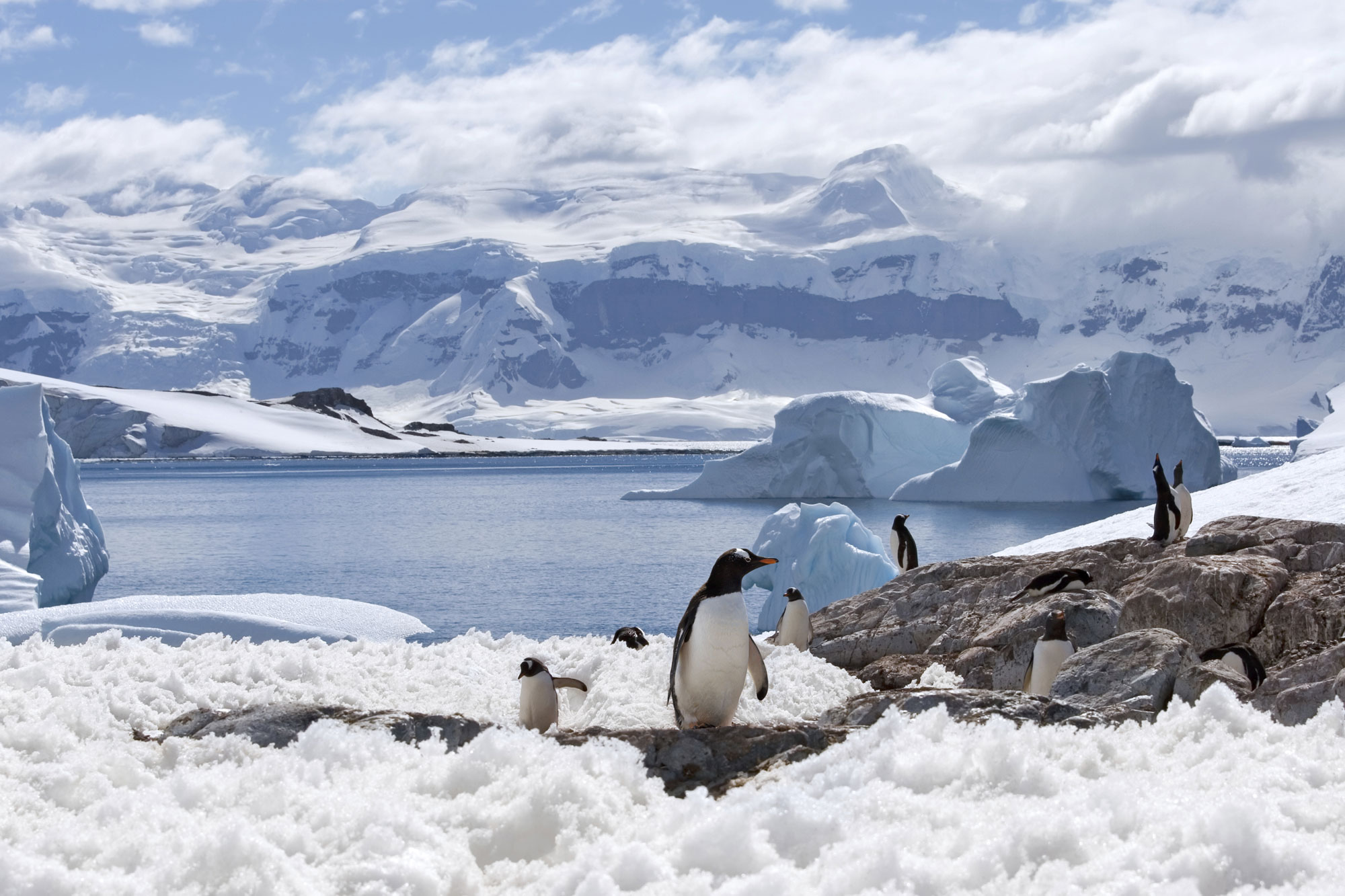South America & Antarctica
with Cynthia Rutledge
January 8-31, 2026
Chile ~ Antarctica ~ Falkland Islands ~ Uruguay ~ Argentina
Sign up deadline: October 1, 2025
This itinerary is what we often dream about. Can you imagine cruising around South America and visiting Antarctica--two continents in one trip! 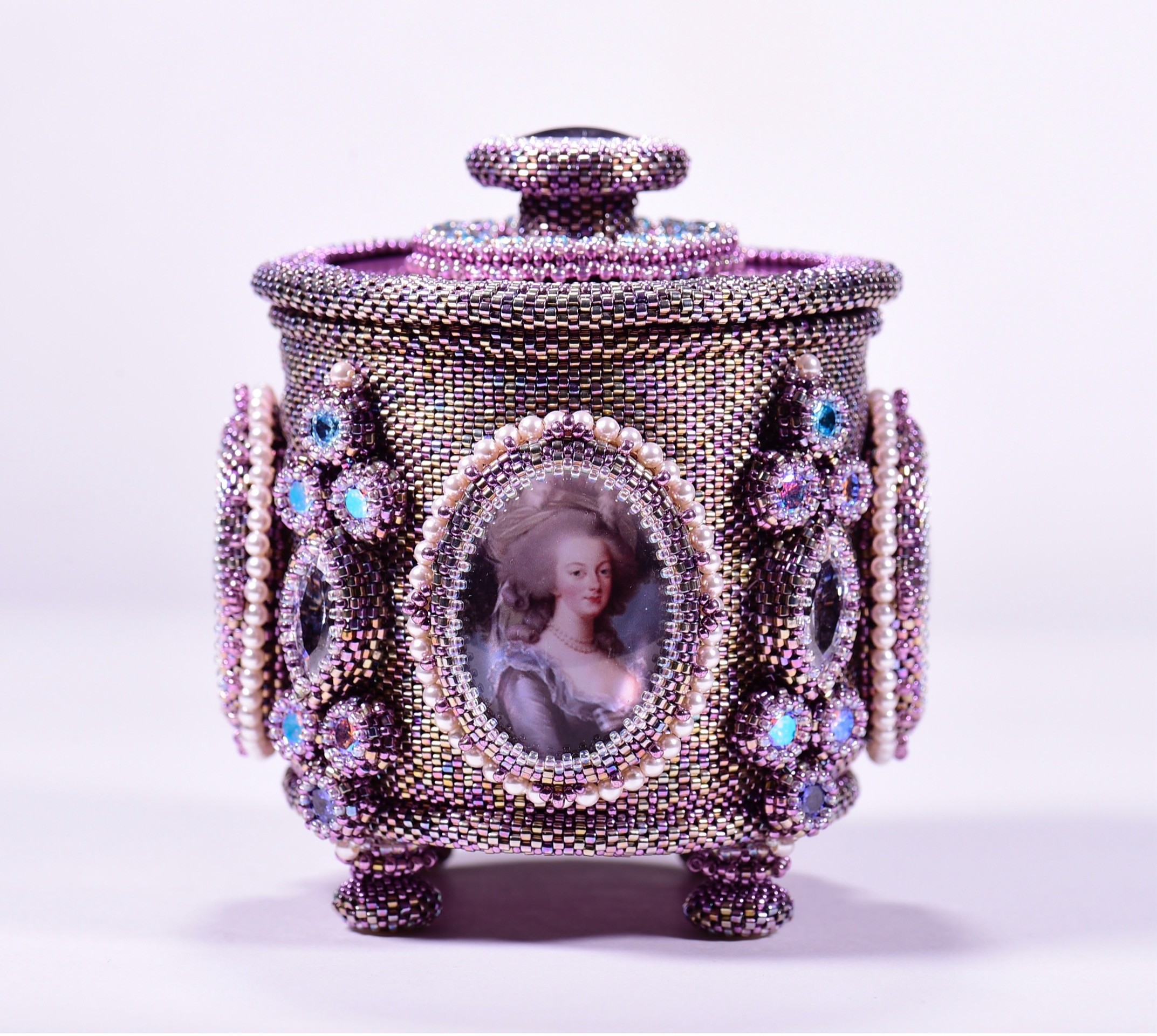 Beautiful scenery. The wildlife. The memories.
Beautiful scenery. The wildlife. The memories.
Join Beadventures on this once-in-a-lifetime experience--and have three days of workshops on a new project created by internationally-acclaimed teacher Cynthia Rutledge.
And for those concerned about the weather--yes, it will be cold the few days we are in Antarctica, but the rest of the journey around South America will see temperatures ranging from an average high of 86 degrees F in Santiago; Chile; 59 degrees F around Cape Horn; to 84 degrees F in Buenos Aires, Argentina!
Itinerary
Day 1. Thursday, January 8. Arrive in Santiago, Chile.
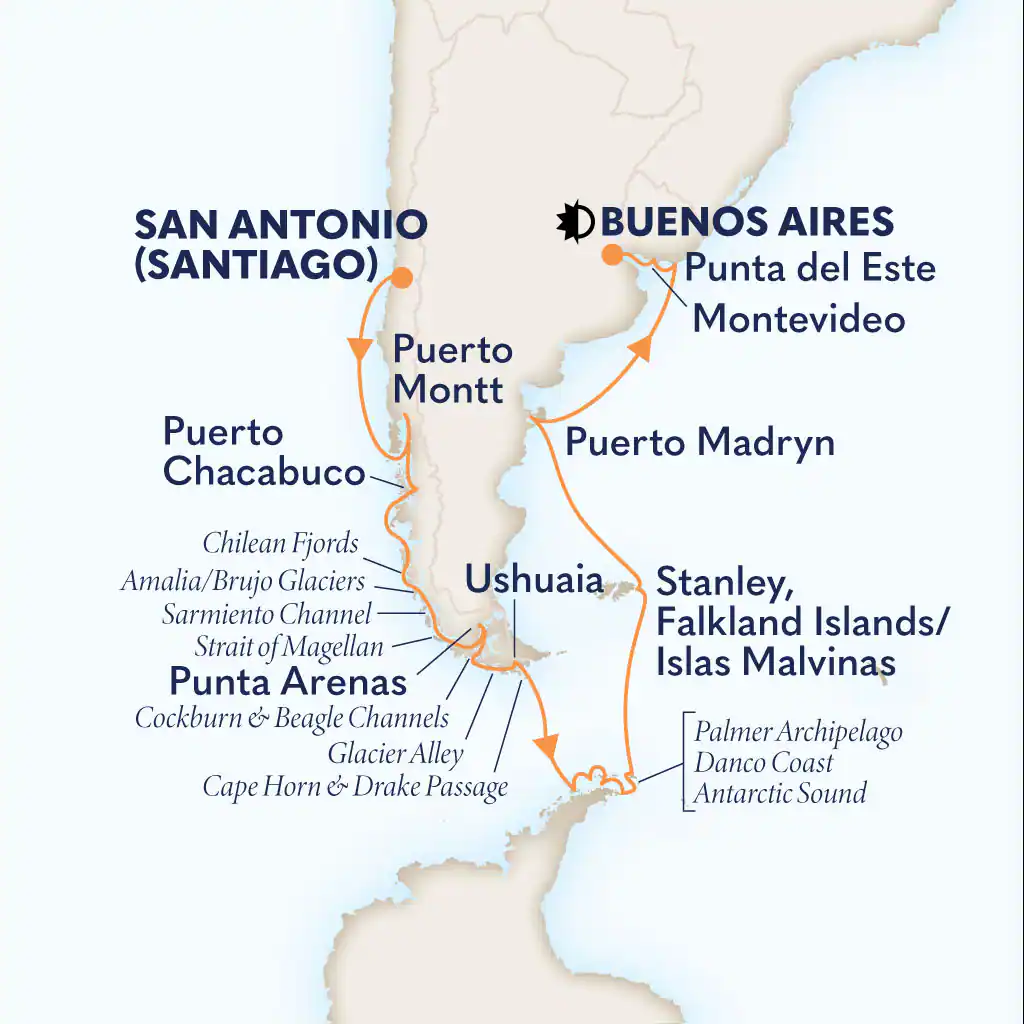 Today you’ll arrive at Santiago International Airport (airport code SCL). Upon arrival you'll be met by a Holland America representative for transfer to our hotel (included). This will be a day to rest after your long flight and it’s yours to explore Chile’s capital's Spanish colonial charm and vivacious spirit. Encircled by the Andes and the Coastal Range, Santiago is centered around the Plaza de Armas, with several of the city’s landmarks: the 18th-century Metropolitan Cathedral the Palacio de la Real Audencia from 1808, the City Hall and the National Museum of History. North of San Antonio lie the picturesque old port and university town of Valparaíso and the colorful seaside resort of Viña del Mar. In between the coast and the capital are valleys filled with some of Chile’s most famous wineries, all inviting you to come and taste, should your schedule permit! Because arrivals will vary, we’ll gather for an informal dinner in early evening (dinner not included).
Today you’ll arrive at Santiago International Airport (airport code SCL). Upon arrival you'll be met by a Holland America representative for transfer to our hotel (included). This will be a day to rest after your long flight and it’s yours to explore Chile’s capital's Spanish colonial charm and vivacious spirit. Encircled by the Andes and the Coastal Range, Santiago is centered around the Plaza de Armas, with several of the city’s landmarks: the 18th-century Metropolitan Cathedral the Palacio de la Real Audencia from 1808, the City Hall and the National Museum of History. North of San Antonio lie the picturesque old port and university town of Valparaíso and the colorful seaside resort of Viña del Mar. In between the coast and the capital are valleys filled with some of Chile’s most famous wineries, all inviting you to come and taste, should your schedule permit! Because arrivals will vary, we’ll gather for an informal dinner in early evening (dinner not included).
Day 2. Friday, January 9. Anchors Away!
We will be sailing on Holland America's Oosterdam. While the ship sets sail at 6 p.m., we can expect to board in late morning/early afternoon (transportation from the hotel to the ship is included). Continue to relax in the morning or do some quick sightseeing. Once on board, get unpacked and become familiar with the ship. We’ll come together for dinner in the early evening.
Day 3. Saturday, January 10. At Sea and Workshop with Cynthia!
Today will be our first workshop day with Cynthia. We’ll start at 9:30 a.m., break for lunch, and finish us around 4 p.m.
Day 4. Sunday, January 11. Puerto Montt, Chile.
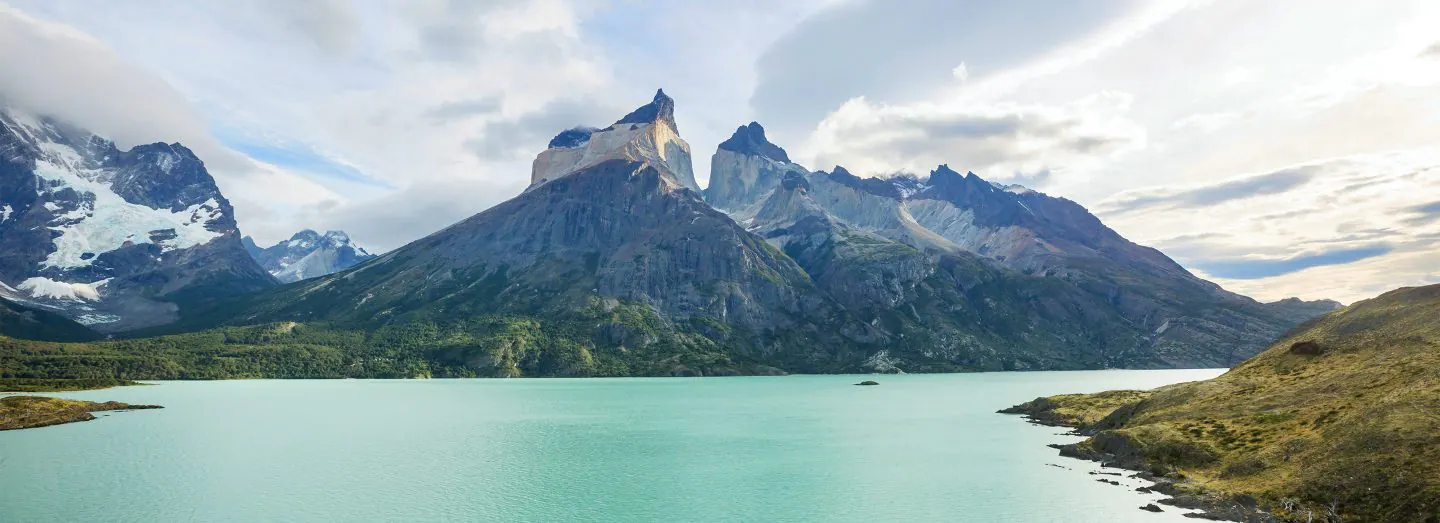 Ship arrives 8 am; departs 5 pm
Ship arrives 8 am; departs 5 pm
Puerto Montt, the capital of the Los Lagos region of Chile, is often called the gateway to the country’s glacial lakes, volcanic landscapes, and surrounding national parks. The port is also home to an over-100-year-old German settlement as well as to indigenous communities of Mapuche people. Adventure travelers often base themselves here and in Puerto Varas when planning treks to Chiloé and Patagonia. Even a short visit, however, provides a fascinating look into Chile’s diverse cultures and offers a taste of the country's stunning scenery. From a stroll around Puerto Varas overlooking Lake Llanquihue, one of Chile’s largest lakes, to a meal in the fishing village of Angelmó of the catch-of- the-day, washed down with a traditional German-style white wine, Puerto Montt is a fascinating introduction to southern Chile and the people who make their home in one of the world's most photogenic landscapes.
Day 5. Monday, January 12. Puerto Chacabuco, Chile—Gateway to Chilean Patagonia.
Ship arrives 10 a.m.; departs 6 p.m.
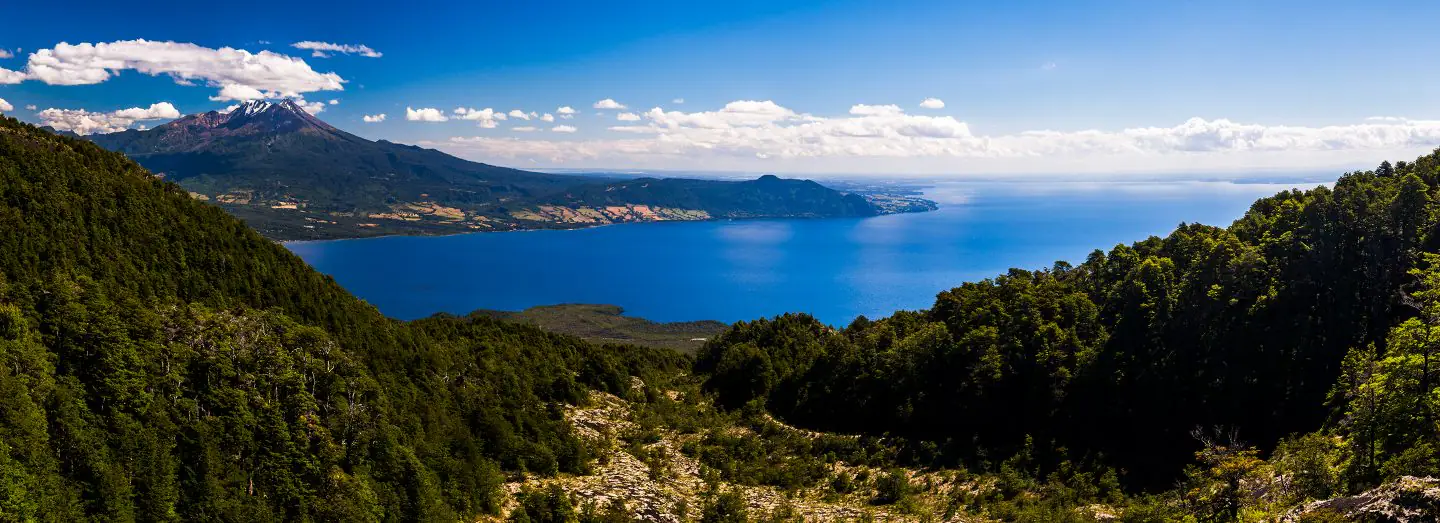 The tiny town of Puerto Chacabuco, with just over 1,000 residents, sits at the head of the Aisén Fjord. Even residents will acknowledge that there isn’t much to see in the town itself, which only recently bothered to put up street signs. Though this modest port may be lacking in compelling attractions, it is the gateway to some of the most beautiful sights in this part of Chilean Patagonia. One option is to drive to the provincial capital, Coihaique, or Puerto Aisén, a city that straddles the Aisén River and is less than 20 minutes by car. In both you can find options to shop for handicrafts and excellent local restaurants. To experience the natural beauty of the region, head to the Río Simpson National Reserve for stunning vistas, pristine waterfalls, and crystal-clear canyon rivers.
The tiny town of Puerto Chacabuco, with just over 1,000 residents, sits at the head of the Aisén Fjord. Even residents will acknowledge that there isn’t much to see in the town itself, which only recently bothered to put up street signs. Though this modest port may be lacking in compelling attractions, it is the gateway to some of the most beautiful sights in this part of Chilean Patagonia. One option is to drive to the provincial capital, Coihaique, or Puerto Aisén, a city that straddles the Aisén River and is less than 20 minutes by car. In both you can find options to shop for handicrafts and excellent local restaurants. To experience the natural beauty of the region, head to the Río Simpson National Reserve for stunning vistas, pristine waterfalls, and crystal-clear canyon rivers.
Day 6. Tuesday, January 13. Cruising Chilean Fjords.
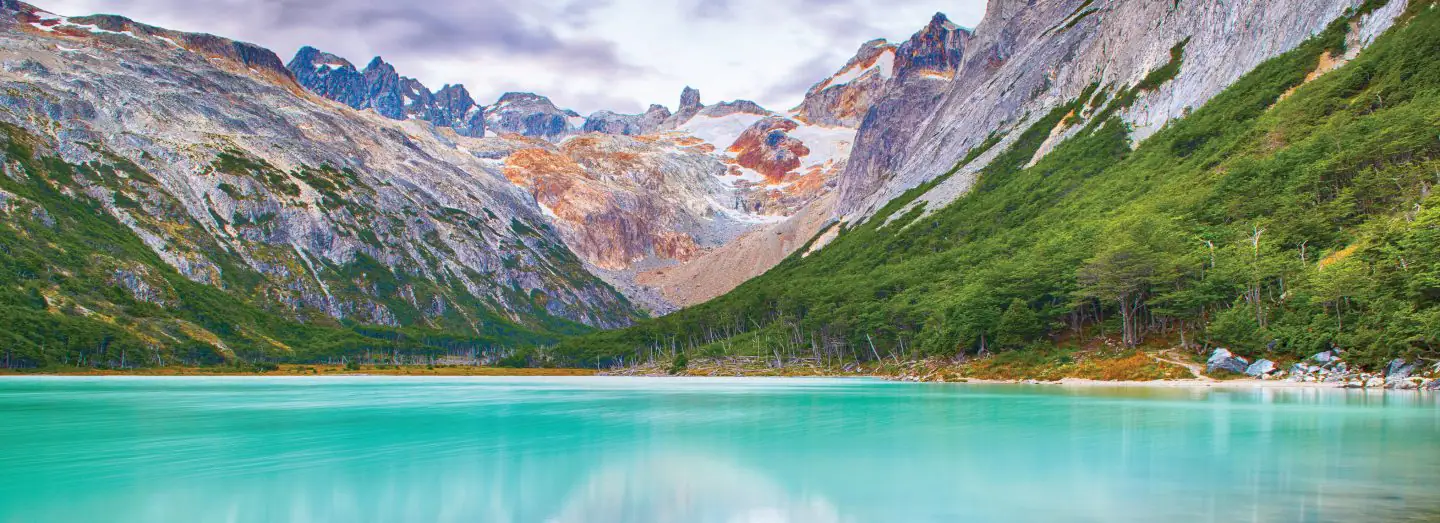 Much like the Norwegian coastline, the west coast of Chile is sliced by dramatic inlets, or fjords, lined with rugged mountains and glacier-covered valleys. This spectacular stretch of coastline starts near the Reloncaví Estuary (roughly halfway down the long spine of Chile) and extends south to the very end of the continent, at Tierra del Fuego, a distance of some 930 miles (as the crow flies). Travel here, however, is never in a straight line—instead ships follow meandering paths along the many fjords and channels. The area is known for its desolate beauty and not surprisingly it's home to many of Chile's national parks. Early Spanish explorers came here in search of the mythical City of the Caesars, whose people were believed to be rich in gold and diamonds. Though the city was never found, the explorers added much to the world's navigational knowledge and at the same time established shipping routes that have been used ever since.
Much like the Norwegian coastline, the west coast of Chile is sliced by dramatic inlets, or fjords, lined with rugged mountains and glacier-covered valleys. This spectacular stretch of coastline starts near the Reloncaví Estuary (roughly halfway down the long spine of Chile) and extends south to the very end of the continent, at Tierra del Fuego, a distance of some 930 miles (as the crow flies). Travel here, however, is never in a straight line—instead ships follow meandering paths along the many fjords and channels. The area is known for its desolate beauty and not surprisingly it's home to many of Chile's national parks. Early Spanish explorers came here in search of the mythical City of the Caesars, whose people were believed to be rich in gold and diamonds. Though the city was never found, the explorers added much to the world's navigational knowledge and at the same time established shipping routes that have been used ever since.
While enjoying the scenery, it wouldn’t be at all surprising if impromptu beading (knitting, crocheting, etc.) breaks out! When it’s today, or any of the days on board, informal gatherings can be expected (this is a Beadventure after all!).
Day 7. Wednesday, January 14. Scenic Cruising Amalia or Brujo Glacier, Sarmiento Channel.
Ice and weather--that’s what it all comes down to as ships make their way through this part of the world. On Chile’s coast along the Southern 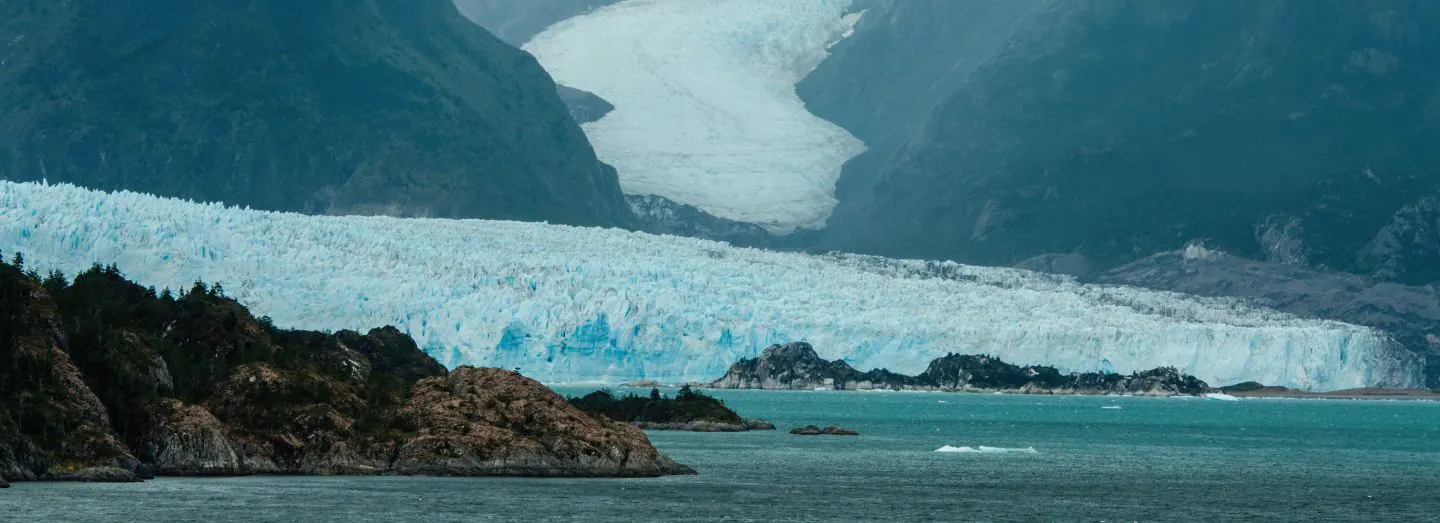 Patagonian Ice Field, ice buildup and quixotic weather conditions heavily dictate which routes ships can take. Even when passage is safe around the popular Amalia, El Brujo, or numerous other breathtaking glaciers found here, misty rain or soupy fog might be the order of the day. And it can always shift in a flash, as glassy waters erupt into choppy waves—or, more happily, shrouded peaks become flooded with sunlight sparkling off the ice fields.
Patagonian Ice Field, ice buildup and quixotic weather conditions heavily dictate which routes ships can take. Even when passage is safe around the popular Amalia, El Brujo, or numerous other breathtaking glaciers found here, misty rain or soupy fog might be the order of the day. And it can always shift in a flash, as glassy waters erupt into choppy waves—or, more happily, shrouded peaks become flooded with sunlight sparkling off the ice fields.
Snug in a parka, and from the comfort of your ship deck, you marvel at the different appearances of the glaciers, from fields pocked with lumps of ice to smooth watery rivulets, all in hues of blue too numerous to describe. The truly lucky get to witness sunrise or dine at sunset while anchored in the deep fjords or narrow channels along the coast. But any time of the day, you’re guaranteed a backdrop of snowcapped peaks while you 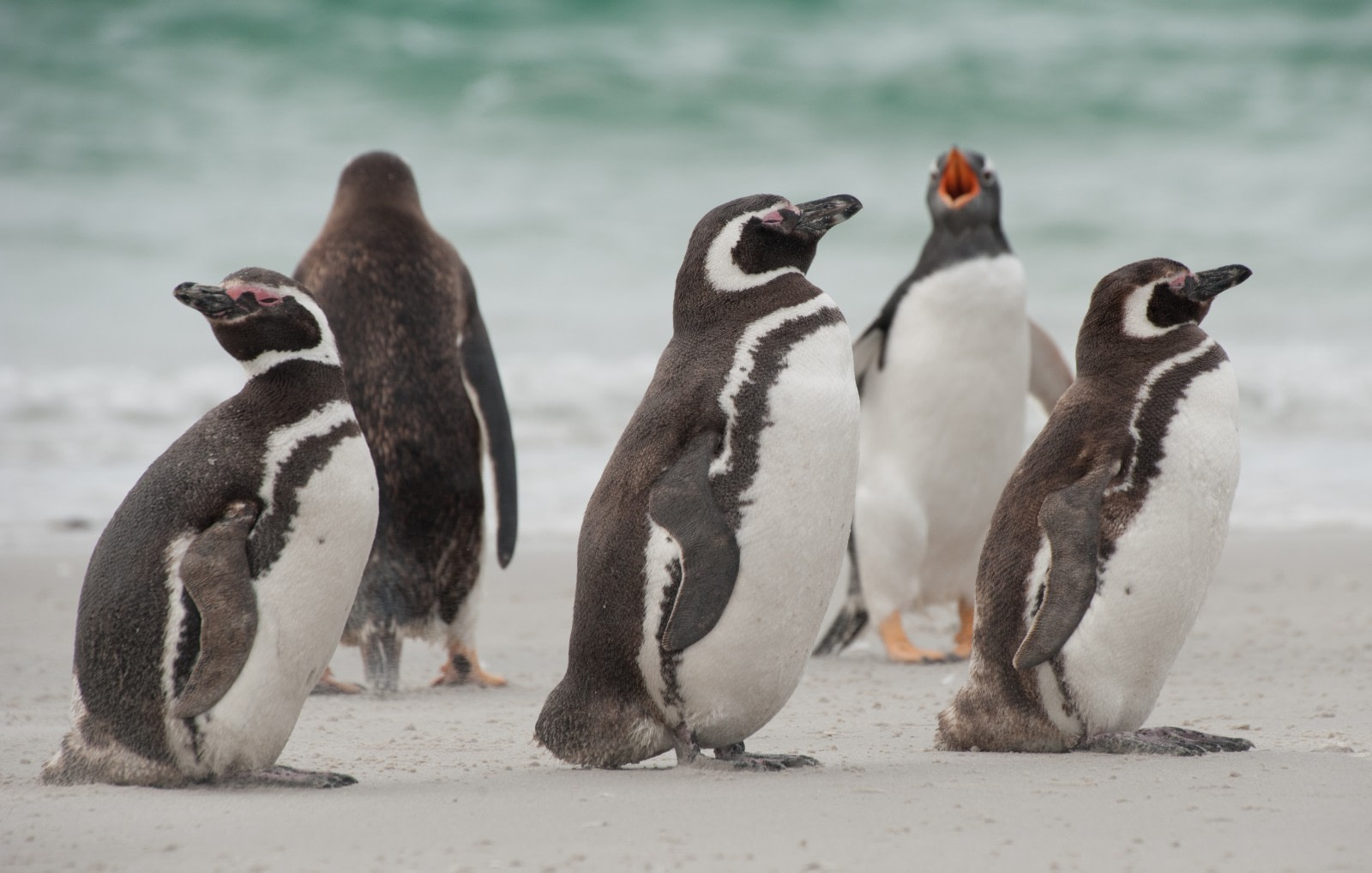 observe small Peale’s dolphins and sea lions as well as terns, albatrosses, and other seabirds going about their daily business around you.
observe small Peale’s dolphins and sea lions as well as terns, albatrosses, and other seabirds going about their daily business around you.
One of the main channels in Patagonia, the Sarmiento Channel runs in a north-south direction, starting at the Guía Narrows and finishing at the southern edge of Victoria Pass, where it joins the Smyth Channel. As elsewhere in the Chilean fjord region, the ragged coastline is cut with inlets set among snow-covered mountain ranges. In many places, massive glaciers run down to the sea. All kinds of marine animals, including Magellanic penguins, southern elephant seals, dolphins, and orcas, can be seen along these shores.
Before the Panama Canal, there was the Strait of Magellan. This cinematic channel linking the Atlantic and Pacific oceans cuts between the mainland tip of South America and Tierra del Fuego Island. It was the passage of choice for seafaring transport between these two oceans until the Panama Canal shortened the distance by thousands of miles in 1914.
Day 8. Thursday, January 15. Cruise Strait of Magellan to Punta Arenas, Chile
Ship arrives 6 a.m.; departs 6 p.m.
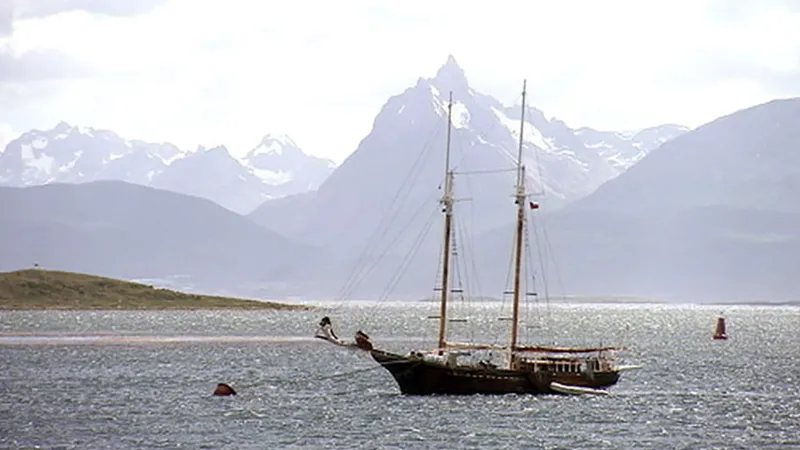 If Punta Arenas exudes an 'edge of the world' air, it's not without reason. This windblown city near Chile's southernmost tip sits on the Strait of Magellan, which itself is positioned squarely between the Atlantic and Pacific oceans. The city has played—and continues to play—an important role in geographic, political, and economic affairs in South America's so-called Southern Cone, which is formed by Chile and neighboring Argentina. There's plenty in this city and its environs to experience—from penguin spotting on Isla Magdalena, kayaking the Strait of Magellan, to visiting area farms and then indulging in surf-and-turf specialties (here meaning fresh seafood and asado, or Chilean barbecue) at local restaurants.
If Punta Arenas exudes an 'edge of the world' air, it's not without reason. This windblown city near Chile's southernmost tip sits on the Strait of Magellan, which itself is positioned squarely between the Atlantic and Pacific oceans. The city has played—and continues to play—an important role in geographic, political, and economic affairs in South America's so-called Southern Cone, which is formed by Chile and neighboring Argentina. There's plenty in this city and its environs to experience—from penguin spotting on Isla Magdalena, kayaking the Strait of Magellan, to visiting area farms and then indulging in surf-and-turf specialties (here meaning fresh seafood and asado, or Chilean barbecue) at local restaurants.
Day 9. Friday, January 16. Cruising Glacier Alley & Ushuaia, Argentina.
Ship arrives Ushuaia at 2 p.m.; departs 8 p.m.
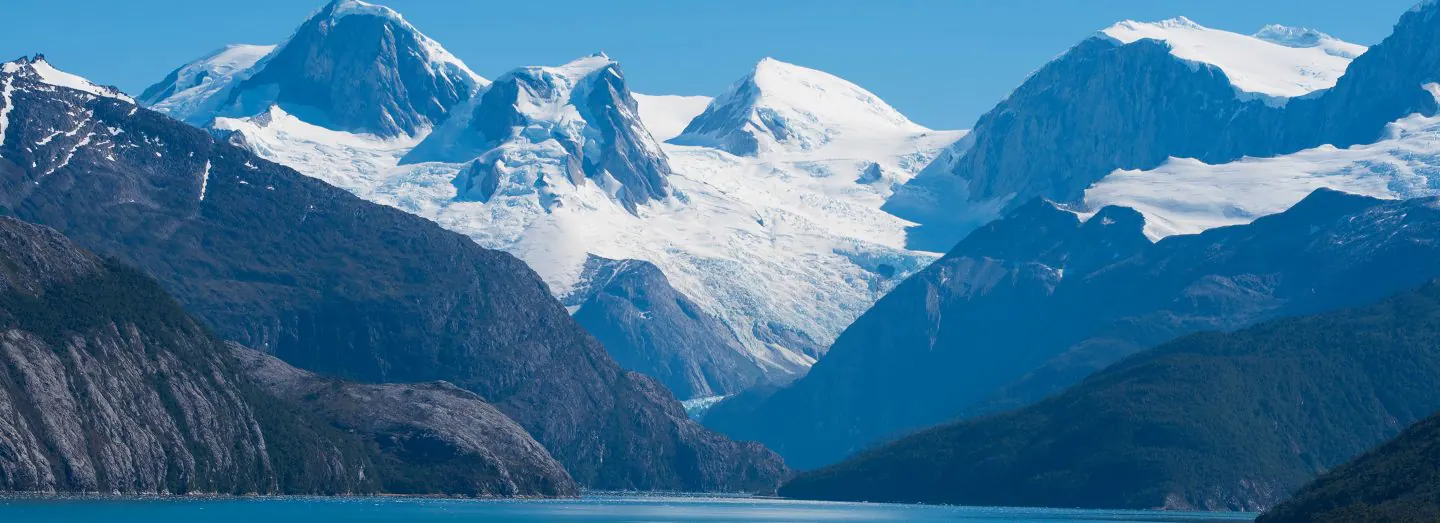 As alleys go, this one is mighty long. Glacier Alley—or, as it’s more elegantly known, Avenue of the Glaciers—stretches along a good portion of the celebrated 150-mile-long Beagle Channel in the vast territory of Tierra del Fuego. As you travel into the Beagle Channel, the vital waterway that allowed ships to avoid the hellish fury of the waters around Cape Horn, you follow the route that the famous HMS Beagle took with a young and then-unknown geologist and evolutionary biologist on board, Charles Darwin. While fighting the harsh elements, and with no creature comforts like the ones enjoyed today, those early sailors were at least treated to one stunning glacier after another, each flowing down from massive mountain ranges and peaks such as the snowcapped one named for Darwin himself. Even if your journey is shrouded in foggy mist, you can’t miss the cracking sound of the blue ice as it tumbles into the channel or the rush of ice-melt waterfalls. Along with all these natural wonders, a
As alleys go, this one is mighty long. Glacier Alley—or, as it’s more elegantly known, Avenue of the Glaciers—stretches along a good portion of the celebrated 150-mile-long Beagle Channel in the vast territory of Tierra del Fuego. As you travel into the Beagle Channel, the vital waterway that allowed ships to avoid the hellish fury of the waters around Cape Horn, you follow the route that the famous HMS Beagle took with a young and then-unknown geologist and evolutionary biologist on board, Charles Darwin. While fighting the harsh elements, and with no creature comforts like the ones enjoyed today, those early sailors were at least treated to one stunning glacier after another, each flowing down from massive mountain ranges and peaks such as the snowcapped one named for Darwin himself. Even if your journey is shrouded in foggy mist, you can’t miss the cracking sound of the blue ice as it tumbles into the channel or the rush of ice-melt waterfalls. Along with all these natural wonders, a 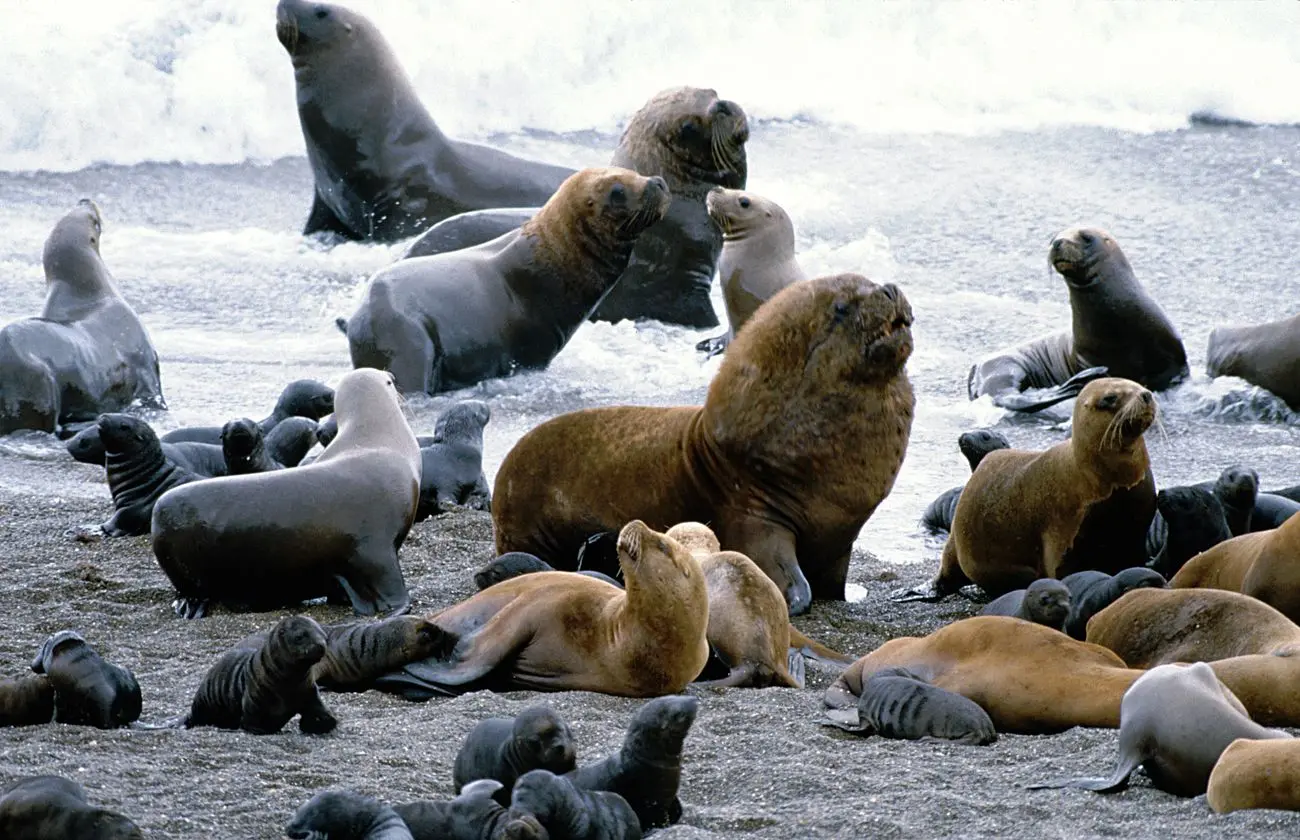 visit to Glacier Alley comes with opportunities to see penguin rookeries, humpback whales, and seals.
visit to Glacier Alley comes with opportunities to see penguin rookeries, humpback whales, and seals.
Dramatic, fantastical, otherworldly—this is the end of the world, for real. Positioned at the southernmost tip of Argentina, this memorable port town is cradled between the pristine—and towering—Martial Mountains and accessed by the picturesque Beagle Channel (which was named for Darwin’s famed vessel). Ushuaia is the capital of the Tierra del Fuego region, which is best described as a spectacular collection of superlative natural wonders. It’s a veritable kaleidoscope of glittering glaciers, snowcapped mountains, dense forests, sparkling lakes, and windswept plains spread across an archipelago of rugged islands.
Day 10. Saturday, January 17. Cruising Drake Passage & Cape Horn.
Thanks to its location—on one of the southernmost points in South America—Cape Horn has played a major role in navigational history. The Strait of Magellan to the north was discovered first, but that route’s narrow width 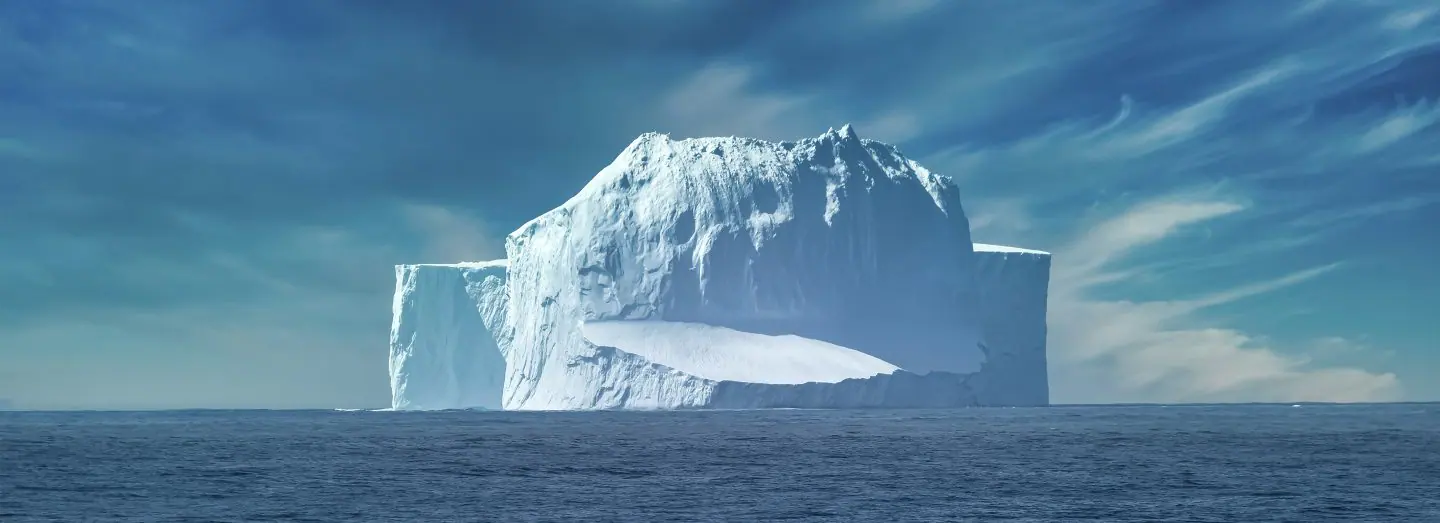 was challenging to navigate. Cape Horn, discovered by the Dutch in 1615, became the primary route for trade ships traveling from Europe or the east side of the Americas to the American West Coast. Cape Horn marks the entrance to the Drake Passage, where the Atlantic and Pacific oceans meet. Until the Panama Canal opened in 1914, this was one of the planet’s major shipping routes. Strong winds, currents, waves, and icebergs made the passage treacherous in the days of sailing ships. Even today, “rounding the Horn” remains a challenge for the many yacht races that pass through its icy waters. Hornos, the island where Cape Horn is located, may look desolate and treeless, but it’s home to a vast number of gulls and other seabirds.
was challenging to navigate. Cape Horn, discovered by the Dutch in 1615, became the primary route for trade ships traveling from Europe or the east side of the Americas to the American West Coast. Cape Horn marks the entrance to the Drake Passage, where the Atlantic and Pacific oceans meet. Until the Panama Canal opened in 1914, this was one of the planet’s major shipping routes. Strong winds, currents, waves, and icebergs made the passage treacherous in the days of sailing ships. Even today, “rounding the Horn” remains a challenge for the many yacht races that pass through its icy waters. Hornos, the island where Cape Horn is located, may look desolate and treeless, but it’s home to a vast number of gulls and other seabirds.
Day 11. Sunday, January 18. At Sea. Workshop with Cynthia.
Today we’ll officially come together for day two of our workshop. Same drill—start at 9:30; lunch break; finish up at 4.
Days 12-15. Monday-Thursday, January 19-22. Antarctic Experience!
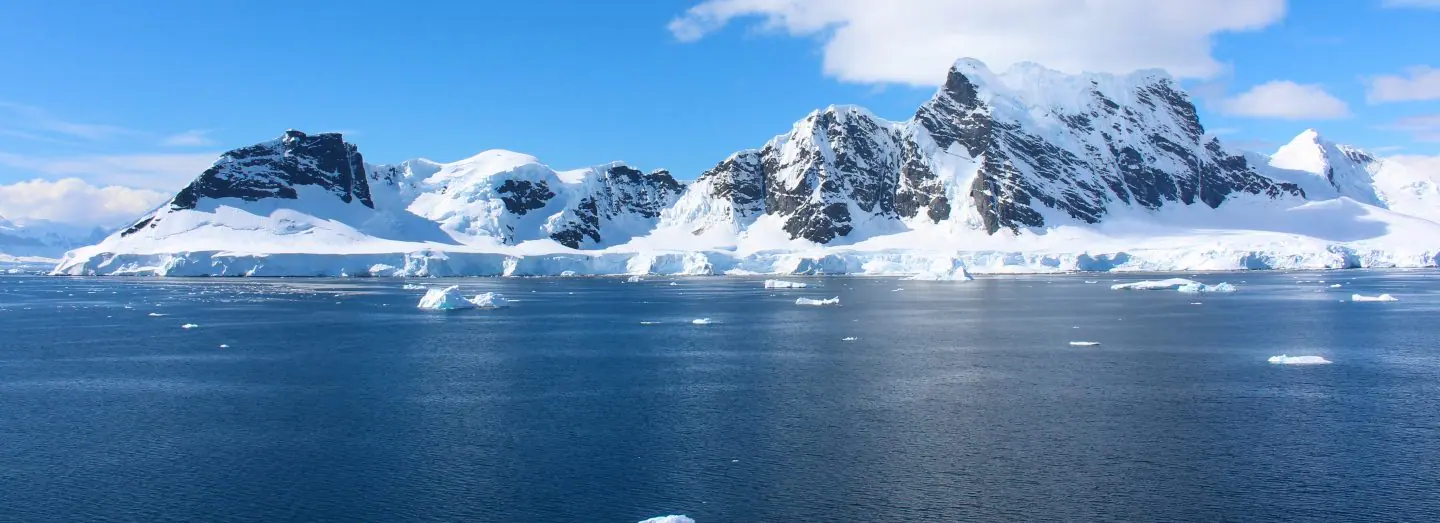 After a day and a half crossing the Drake Passage, which separates South America from Antarctica, our ship will arrive at the White Continent. On your Antarctic Expedition you will sail through the bays and islands of the Palmer Archipelago, off the northern tip of the long Antarctic Peninsula, which reaches out toward South America. Encircled in a landscape of snow and ice in every direction, our ship will slowly navigate the iceberg-dotted waters. The
After a day and a half crossing the Drake Passage, which separates South America from Antarctica, our ship will arrive at the White Continent. On your Antarctic Expedition you will sail through the bays and islands of the Palmer Archipelago, off the northern tip of the long Antarctic Peninsula, which reaches out toward South America. Encircled in a landscape of snow and ice in every direction, our ship will slowly navigate the iceberg-dotted waters. The 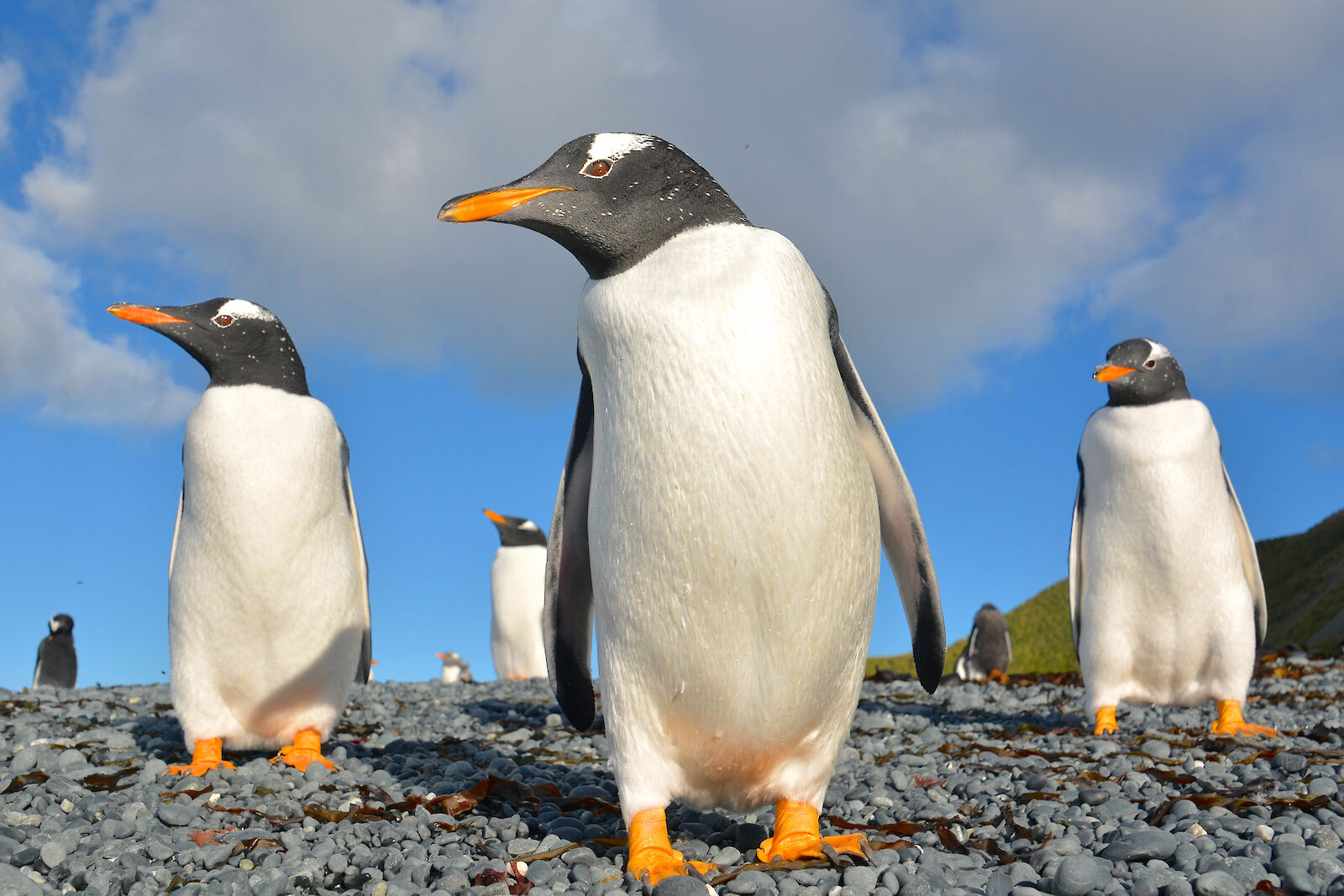 surroundings are hauntingly quiet as well, an aspect of the continent that comes as a surprise to many first-time visitors. Along the way, the ship's naturalists will point out the birds—terns, petrels, and gulls—found on the coast and on small islets at stops like Dallmann Bay. As you pass dark, rocky Cuverville Island, you’ll see some of the 6,500 pairs of gentoo penguins that make their home there, the largest known colony in the world. Continuing to Paradise Harbor, you'll have a chance to observe not only gentoo and chinstrap penguins but possibly humans as well: both Argentina and Chile have manned research stations here.
surroundings are hauntingly quiet as well, an aspect of the continent that comes as a surprise to many first-time visitors. Along the way, the ship's naturalists will point out the birds—terns, petrels, and gulls—found on the coast and on small islets at stops like Dallmann Bay. As you pass dark, rocky Cuverville Island, you’ll see some of the 6,500 pairs of gentoo penguins that make their home there, the largest known colony in the world. Continuing to Paradise Harbor, you'll have a chance to observe not only gentoo and chinstrap penguins but possibly humans as well: both Argentina and Chile have manned research stations here.
Day 16. Friday, January 23. At Sea. Workshop with Cynthia.
Today will be our last “official” workshop day. Typically, “unofficial” beading takes place on other days of free time!
Day 17. Saturday, January 24. Stanley/Falkland Is/Islas Malvinas.
Arrive 8 a.m.; depart 5 p.m.
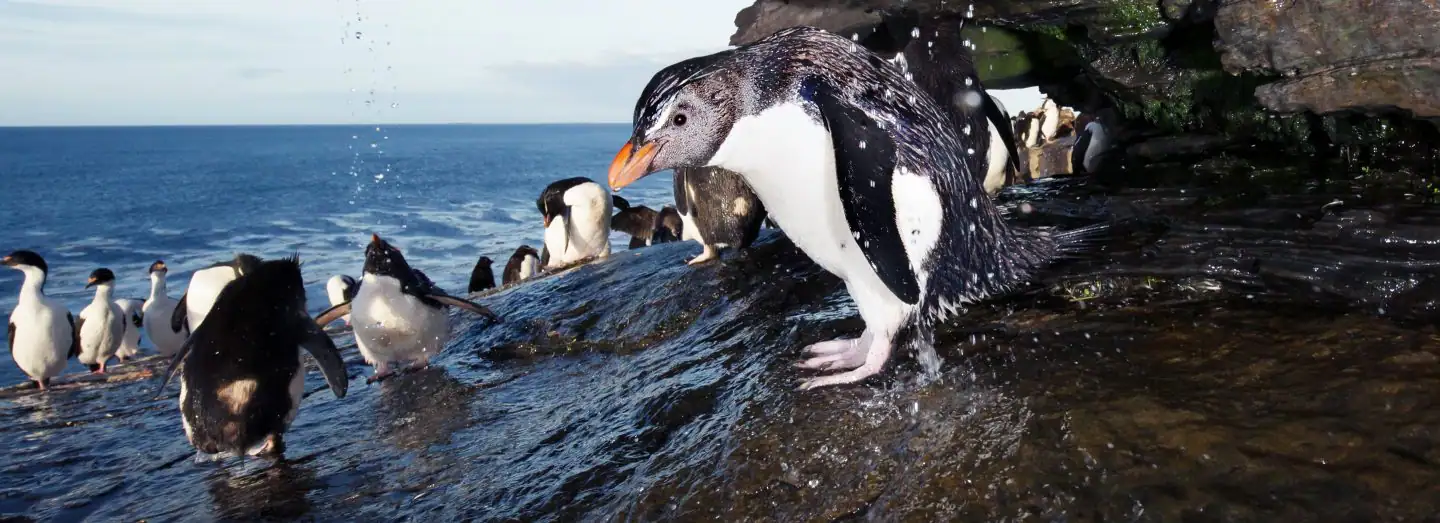 The world's southernmost capital, Stanley is in the Falklands archipelago, which consists of two main islands, East and West Falkland, along with smaller islands nearby. Stanley is proud of its British heritage, evidenced everywhere from its red telephone boxes to its pubs. The Falklands were first claimed by the English in 1765; over the centuries the Crown has had to abandon, reclaim, and defend these far-flung islands from invading nations—including an Argentine foray in 1982. During the early years of their colonization, the Falklands were used as a base for ships hunting sperm whales for oil, followed by those hunting seals for fur. Today in this remote British territory, fishing and tourism are what drive the economy.
The world's southernmost capital, Stanley is in the Falklands archipelago, which consists of two main islands, East and West Falkland, along with smaller islands nearby. Stanley is proud of its British heritage, evidenced everywhere from its red telephone boxes to its pubs. The Falklands were first claimed by the English in 1765; over the centuries the Crown has had to abandon, reclaim, and defend these far-flung islands from invading nations—including an Argentine foray in 1982. During the early years of their colonization, the Falklands were used as a base for ships hunting sperm whales for oil, followed by those hunting seals for fur. Today in this remote British territory, fishing and tourism are what drive the economy.
Day 18. Sunday, January 25. At Sea.
A day of leisure—or impromptu beading! There’s also lots of activities going on around the ship.
Day 19. Monday, January 26. Puerto Madryn, Agentina.
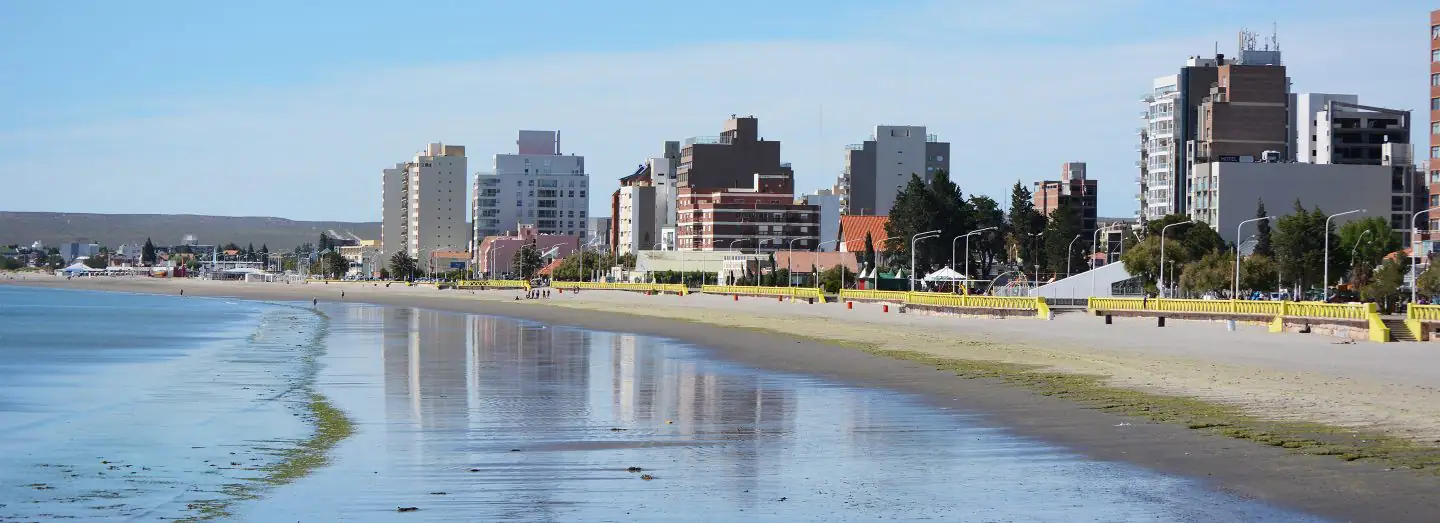 To a Spanish speaker, the name of Puerto Madryn, a city of some 94,000 in northern Patagonia in Argentina, may look odd. That second word doesn't appear to be Spanish, because it's not. Love Jones-Parry, a prominent Welsh landowner, traveled to Patagonia in 1862 to determine whether the area was appropriate for Welsh settlers. When his ship was blown off course, he named the bay where it landed Porth Madryn, after his estate in Wales. In 1865, a group of 162 Welsh immigrants, encouraged by Jones-Parry's favorable reports, sailed to Argentina to establish the settlement known today as Puerto Madryn. It is best known as the gateway to the Península Valdés, a UNESCO World Heritage Site that's home to significant populations of seals, sea lions, and whales just offshore. While the natural wonders and the region's fauna are the main draws, it's worth spending some time exploring the restaurant-lined promenades and beaches that have made the city an increasingly popular resort destination.
To a Spanish speaker, the name of Puerto Madryn, a city of some 94,000 in northern Patagonia in Argentina, may look odd. That second word doesn't appear to be Spanish, because it's not. Love Jones-Parry, a prominent Welsh landowner, traveled to Patagonia in 1862 to determine whether the area was appropriate for Welsh settlers. When his ship was blown off course, he named the bay where it landed Porth Madryn, after his estate in Wales. In 1865, a group of 162 Welsh immigrants, encouraged by Jones-Parry's favorable reports, sailed to Argentina to establish the settlement known today as Puerto Madryn. It is best known as the gateway to the Península Valdés, a UNESCO World Heritage Site that's home to significant populations of seals, sea lions, and whales just offshore. While the natural wonders and the region's fauna are the main draws, it's worth spending some time exploring the restaurant-lined promenades and beaches that have made the city an increasingly popular resort destination.
Day 20. Tuesday, January 27. At Sea.
Another day of leisure and on-your-own relaxation and entertainment.
Day 21. Wednesday, January 28. Punta del Este, Uruguay.
Arrive 10 a.m.; depart 7 p.m.
For years, Punta del Este was one of those places that travel writers would describe as “sleepy.” With a population of laid-back permanent 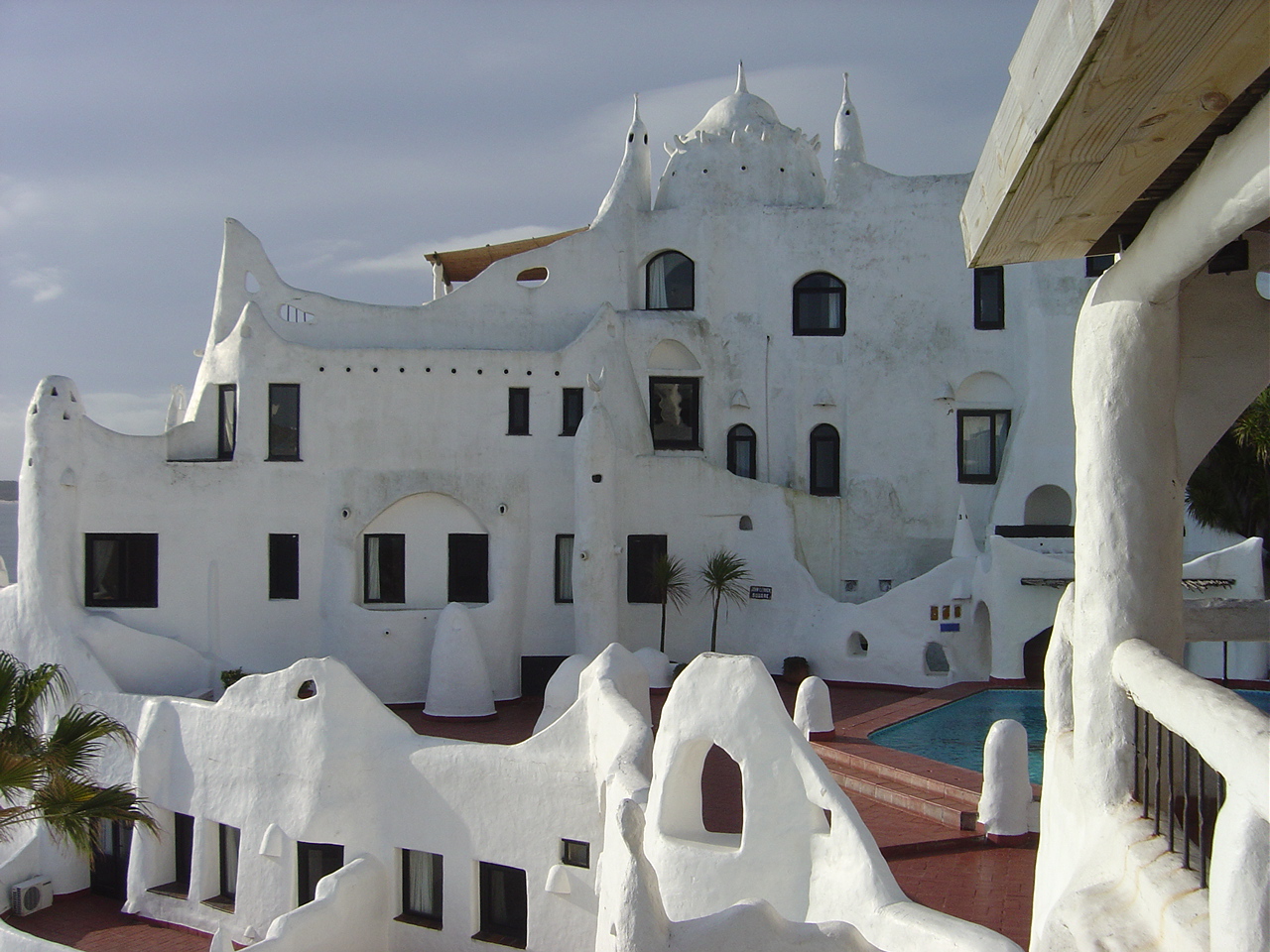 residents numbering just under 10,000, there wasn't a lot going on in this town in the remote southeastern corner of Uruguay. But then the news got out. Punta del Este began to be referred to as the Hamptons of South America, and—more alluring still—as the continent's own St.-Tropez. In other words, Punta del Este was a gorgeous coast and a safe and moneyed port city: perfect for a vacation. It's the preferred getaway for wealthy Uruguayans and Argentines and many have second homes here. The population swells with these part-time residents and sun-seeking vacationers during the winter, when quiet Punta del Este cedes to its alter ego of glitzy, glamorous resort town. In addition to soaking up sun on the beautiful beaches and swimming in turquoise waters, visitors enjoy shopping at upscale boutiques, exploring the local art scene, trying their luck at a casino, and tasting fresh-from-the-sea specialties at Punta del Este's restaurants.
residents numbering just under 10,000, there wasn't a lot going on in this town in the remote southeastern corner of Uruguay. But then the news got out. Punta del Este began to be referred to as the Hamptons of South America, and—more alluring still—as the continent's own St.-Tropez. In other words, Punta del Este was a gorgeous coast and a safe and moneyed port city: perfect for a vacation. It's the preferred getaway for wealthy Uruguayans and Argentines and many have second homes here. The population swells with these part-time residents and sun-seeking vacationers during the winter, when quiet Punta del Este cedes to its alter ego of glitzy, glamorous resort town. In addition to soaking up sun on the beautiful beaches and swimming in turquoise waters, visitors enjoy shopping at upscale boutiques, exploring the local art scene, trying their luck at a casino, and tasting fresh-from-the-sea specialties at Punta del Este's restaurants.
Day 22. Thursday, January 29. Montevideo, Uruguay.
Arrive 7 a.m.; departs 6 p.m.
Uruguay’s capital, Montevideo, often gets overshadowed by her larger, flashier sister across the Río de la Plata, Buenos Aires. While 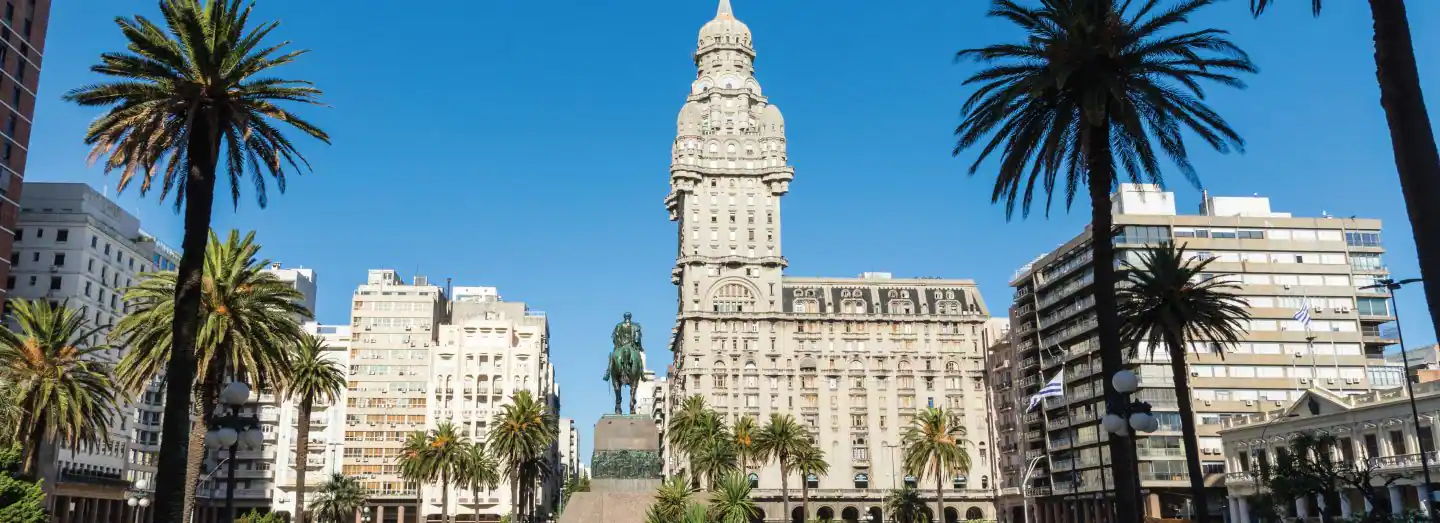 Montevideo may not have quite the bustle of Argentina’s capital, it shares that city’s cosmopolitan atmosphere and, of course, excellent steak houses. Its smaller size is also an advantage: There is a relaxed feel to this more low-key counterpart to BA.
Montevideo may not have quite the bustle of Argentina’s capital, it shares that city’s cosmopolitan atmosphere and, of course, excellent steak houses. Its smaller size is also an advantage: There is a relaxed feel to this more low-key counterpart to BA.
Montevideo has a surprising mix of neighborhoods. The Ciudad Vieja, with its grid of streets on a peninsula separating the Río de la Plata from the harbor, is the colonial heart. Long neglected, it has recently undergone a renaissance—restaurants, bars and clubs are opening in historic buildings that have been meticulously restored. Montevideo’s downtown is a treasure trove of Art Deco buildings, while the newer eastern suburbs may evoke Miami for visitors. Gleaming skyscrapers and open-air cafés overlook beaches that run for miles.
Day 23. Friday, January 30. Buenos Aires, Argentina.
Arrive 8 a.m.; overnights in port
I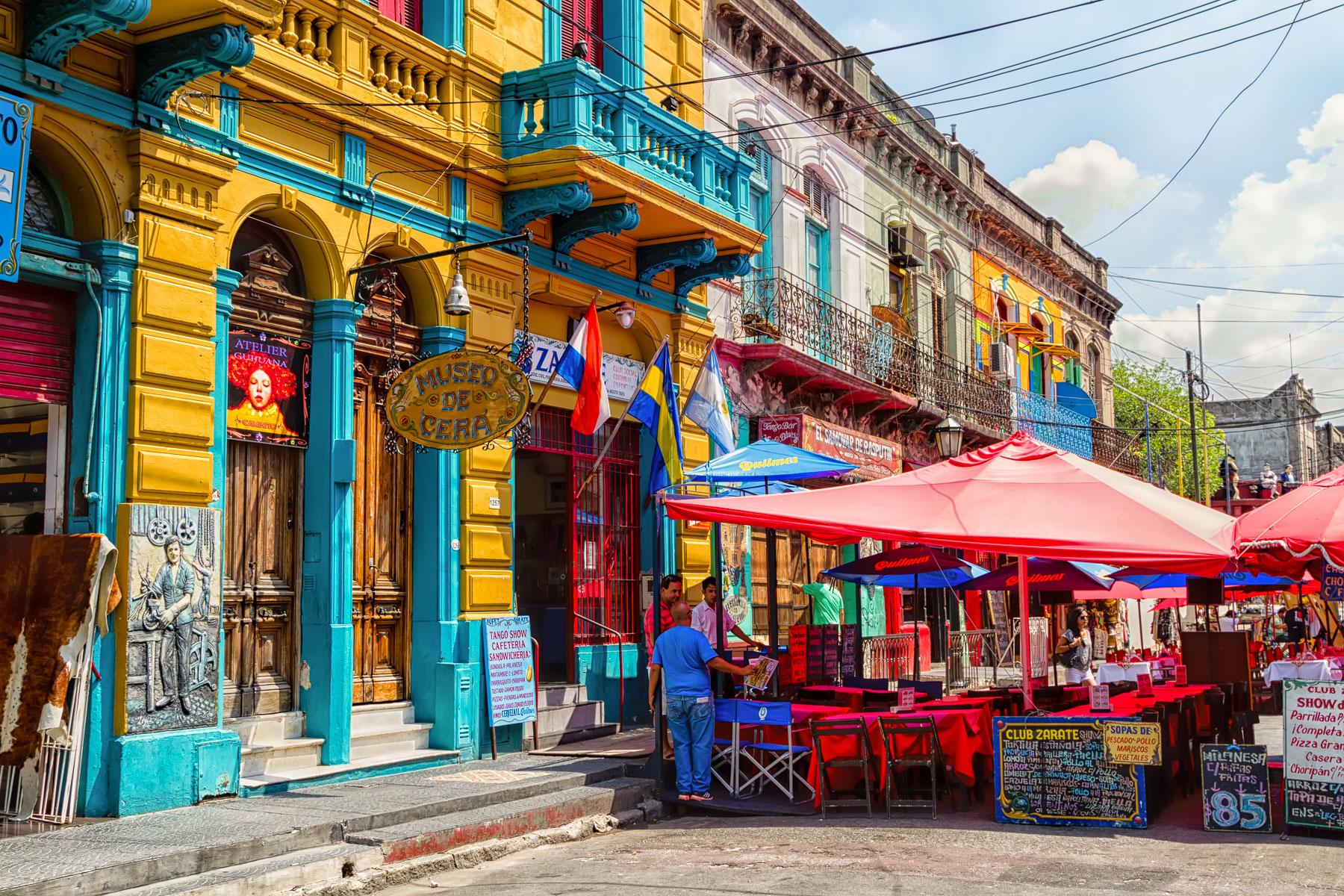 n the early 20th century, Buenos Aires, Argentina, gained immense wealth when it began shipping its pampas-raised beef around the world. It quickly entered the club of great world cities, and a slew of attractions and architectural jewels soon arose. Since that time, the capital has experienced huge swings in economic and political fortune. But Buenos Aires continues to fascinate and entertain sightseeing visitors, both for its chaotic energy and for its sheer urban beauty. Thankfully, the Belle Époque grandeur and enormous tracts of greenery remain. Looking beyond the city's sights, Buenos Aires is known as the birthplace of tango, and while the music and dance never quite went away, today tango is making a resurgence. Fans come here from around the world to take part in or watch the milongas (dance events).
n the early 20th century, Buenos Aires, Argentina, gained immense wealth when it began shipping its pampas-raised beef around the world. It quickly entered the club of great world cities, and a slew of attractions and architectural jewels soon arose. Since that time, the capital has experienced huge swings in economic and political fortune. But Buenos Aires continues to fascinate and entertain sightseeing visitors, both for its chaotic energy and for its sheer urban beauty. Thankfully, the Belle Époque grandeur and enormous tracts of greenery remain. Looking beyond the city's sights, Buenos Aires is known as the birthplace of tango, and while the music and dance never quite went away, today tango is making a resurgence. Fans come here from around the world to take part in or watch the milongas (dance events).
Day 24. Saturday, January 31. Disembark and Depart for Home.
Today you’ll disembark the ship. Departure flights should be scheduled to leave after 12 o’clock noon. Transportation to the airport is included.
About the project . . . "For the Love of Art"
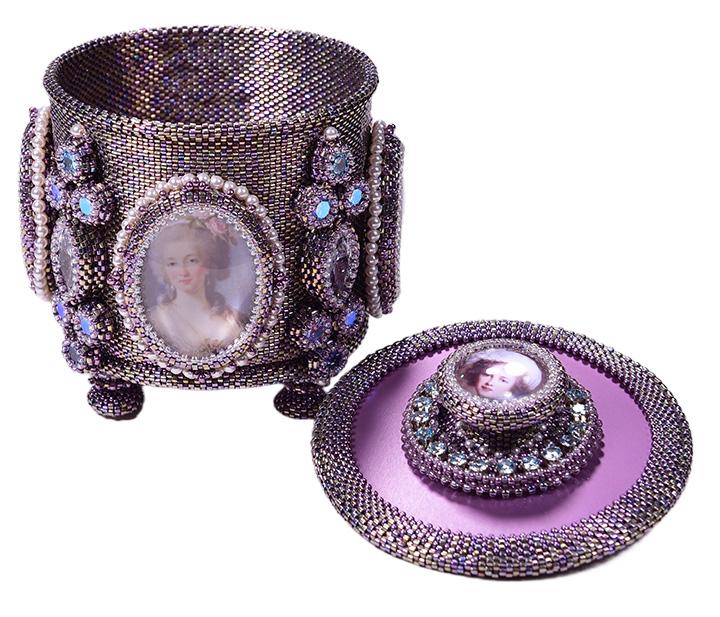 Cynthia has designed this beautiful box as a new Masters Class for Beadventures! She shares:
Cynthia has designed this beautiful box as a new Masters Class for Beadventures! She shares:
"This project is about what I look for in a painting to inspire me to design. Many times, I am looking at clothing and jewelry, then I look at color and composition. If the person is famous, what were they famous for? What in their history has a tale to tell?
"For the Love of Art" focuses on the relationship between you and a favorite painter’s paintings (or anything else special to you). This style of box was called a “casket” in the 18th century. Basically, it means a trinket box and would have been placed on a lady’s toilette table. It usually contained the lady’s earrings and necklaces so that they were in easy reach.
The construction of the box begins with a metal base that is bezeled. The wall of the box comes off of the base to the desired height. This style of box usually had feet, so CZs and pearl cabs are bezeled to lift the box up off the table for better scale. The class will dive into the design process with a focus on your favorite paintings. Whether you choose to have a mix of different artists or you focus on one artist’s work will be up to you. You could also personalize it by using images of your family, pets, or other favorite things!
About our Teacher . . . Cynthia Rutledge
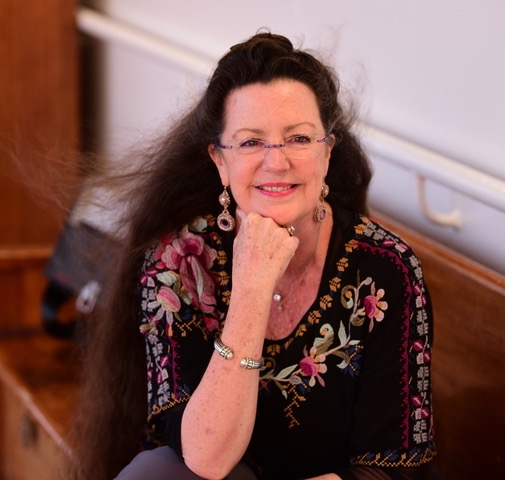 Cynthia is a contemporary seed bead artist and has been teaching for over 27 years. She specializes in peyote stitch and off‐loom weaving techniques, with an emphasis on developing sculptural unsupported shapes in beadwork. Her work has been exhibited in national and international shows, many books and publications including her first solo book, “Timeless Beadwork Designs”.
Cynthia is a contemporary seed bead artist and has been teaching for over 27 years. She specializes in peyote stitch and off‐loom weaving techniques, with an emphasis on developing sculptural unsupported shapes in beadwork. Her work has been exhibited in national and international shows, many books and publications including her first solo book, “Timeless Beadwork Designs”.
Cynthia shares “My path to being an artist has always been driven by my desire to create something that is beautiful to me. I bead for myself, to satisfy my desire to create, to feed my soul. That others admire my work is a gift. If they see something in my work that appeals to them, that calls to them, then I am blessed indeed, as maybe they can see a glimpse of the part of me that is just following my heart.”
Learn more about Cynthia at her webpage.
Trip Cost
Approximately $5,995 based on group rate availability for a shared hotel room in Santiago, Chile, and shared interior ship cabin (Category MM) on this 23-day Beadventure (cost is expected to increase as ship's capacity gets booked). Cabin can be upgraded to Oceanview or Verandah at additional cost, if available. Single supplement for pre-cruise hotel and cruise is approximately $3,130.
Non-beader savings: $180.00
Sign-up deadline: If you want to go, need to sign up by October 1st!
Cost includes:
- Pre-cruise hotel night in Santiago, Chile
- 22-day cruise aboard Holland America's Oosterdam
- All breakfasts, lunches, dinners aboard the ship
- Transportation from the Santiago airport to the hotel
- Transportation from the hotel to the ship
- Transportation from the ship to Buenos Aires airport
- Tuition for workshop with Cynthia
Cost Does Not Include:
- Airfare to Santiago Chile and from Buenos Aires, Argentina
- Meals on day of arrival in Santiago
- Trip insurance (highly recommended)
- Shore excursions/tours
- Kit for Cynthia’s workshop
To Sign Up - Deadline October 1, 2025!
To guarantee your spot on this trip, send in a $1,000 deposit and completed registration form after reviewing Beadventures' Conditions & Responsibilities information. Final payment will be due 120 days prior to the start of the trip.
Trip Notes . . . IMPORTANT!
Travel Insurance
You are making a big investment in your upcoming travel. Despite all your planning, travel can be unpredictable--from cancelled flights to last minute illness. To help protect the investment you are making in your upcoming trip, you are strongly encouraged to purchase trip insurance. Research coverage options by clicking here. Another option is Holland America's cruise protection plan (click here for information).
Other Trip Notes . . .
While in port--tours and shore excursions
Holland America has a wide number from which you can select, the cost for which is not included in the Beadventure package.
Passport
Check your passport expiration date to make certain it is valid for at least six months beyond the dates of this trip.
About Cruising on a Beadventure
Beadventures doesn’t structure group activities on the days that the ship is in Port. You can enjoy a shore excursion based on your area of interest; or you can relax with a spa appointment or otherwise enjoy some down time. There also will be lots of opportunities to informally get together to bead, knit, and visit. In the evening the group will come together for dinner, or if you chose, you could enjoy in-room dining or have dinner at one of the ship’s specialty restaurants. We’re flexible—you can have as much together time/or on-your-own time as you prefer!
Bead Workshop Gear
Remember to bring your customary bead supplies (beading mat, needles, thread, scissors, magnification, and task light). A task light is important (because lighting in the classroom isn’t that great). It’s best if your light is battery-powered because we may not have electric extension cords in the classroom. Your best option is to have a rechargeable power source for your light (so you don’t have to pack lots and lots and lots of extra batteries!).

